
Review on 💻 Griffin Grey HP 15s-fq068ur Laptop - 15.6" Display, Intel Pentium Silver N5030 1.1 GHz, 4GB RAM, 128GB SSD, Intel UHD Graphics 605, Windows 10 Home, Model 3B3N9EA by Boyan Chakarov ᠌

The best product, from those that I have viewed, I advise everyone!
Here is a quick guide for installing Windows 10 on this laptop (thanks for the feedback on the laptop's sale and other publications on the internet): 1. On a different PC, make a bootable USB flash drive: 1.1. We bring an 8 GB or larger flash drive. Format it now. 1.2. After clicking "Download tool now" on the microsoft. Com/ru-ru/software-download/windows10 website, the "MediaCreationTool21H1. Exe" file is downloaded. Run it, then choose "USB flash drive" as a result. 1.3. Next, we download the "f6flpy-x64. Zip" file and unpack it into the USB flash drive. The drivers for the flash drive can be found on the first page of the search results for "intel rst driver" on the website intel. Ru. Everything is now ready, and the flash drive. 2. Install Windows 10 (because the touchpad is inoperable, we must use the TAB and Enter keyboards and check the appropriate boxes): 2.1. We put the USB flash drive in the laptop, plug it in, hold down Esc, and then turn the computer on while holding down Esc. When a window with a selection appears, click F9 Boot Device Options, choose the version of Windows 10 you want to install (I choose Pro), and then follow the on-screen instructions. It's crucial that the laptop recognizes the flash drive in this case; if it doesn't, go back a step and try again. 2.2. We choose "Custom Windows Installation" and installation without a key, erase all existing partitions (I had 3 computers), and partition the disk with 100 GB under the system (although I left 200 GB there as well), and the remaining space under the files. On the first partition (drive C:), we installed the system. 2.3. Remove the USB flash device once the installer prompts you to reboot so that Windows can start. 2.4. After then, perform the instructions without logging on to the Internet. 3. Installation of drivers 3.1. At first, neither the touchpad nor the sound functioned. You should eat Windows: "Settings" - "ates and Security" - "Windows ate" to get everything to function as it should. Everything started working after a few reboots. 4. Activating Windows 10 After researching the matter, I made the decision to forgo activating Windows; this has no effect on anything other than the design, however the wallpaper can be altered. You can, however, eat the system. I sincerely hope my input is useful.
- To be able to work quickly and without hindering anything, I decided to use a laptop. I couldn't find anything better for this money (I paid 38,500 for it). According to the essay on pravilno-vybrat, I required a laptop because I needed: 8 GB of RAM, an IPS display with a matte screen, an Intel Core i3 1125G4 processor with a performance rating of 9172 on the Passmark test, and 512 GB of memory. I appreciated the matte screen, the excellent keyboard, and the handy numeric keypad with NumLock.
- 1. There is no keyboard backlight (not a big deal for me because I type blindly), 2. The keyboard keys have a tiny backlash. 3. Difficult to open, however this will become easier with time. 4. Silver-painted; it is stated that the paint may peel off; this appears to be true (although I use it carefully). 5. Includes FreeDOS (with BIOS), which means that without a system, you must set up the system yourself. However, there are certain caveats:)
New products
Comments (0)
Top products in 💻 Laptops
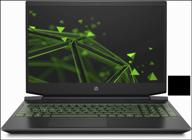
HP Pavilion Gaming 15-ec2048ur 15.6" Laptop 1920x1080, AMD Ryzen 5 5600H 3.3GHz, 8GB RAM, 512GB SSD, NVIDIA GeForce RTX 3050, DOS, 4E0T5EA, Dark Grey/Bright Green Chrome Logo

77 Review
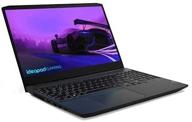
Lenovo IdeaPad Gaming 3: 15.6 Inch AMD Ryzen Gaming Laptop with RTX 3060 6GB GDDR6

118 Review
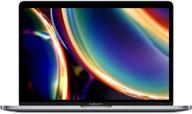
13-Inch Apple MacBook Pro with 8GB RAM and 512GB SSD Storage in Space Gray - Previous Model

77 Review
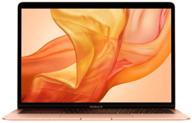
Renewed Apple MacBook Air - 13-inch Retina Display, 💻 1.6GHz Dual-core Intel Core i5, 256GB in Gold (Latest Model)

156 Review
Another interesting products
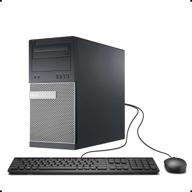
🖥️ Dell Optiplex 990 Tower Business Desktop Computer: Intel Quad Core i5, 8GB RAM, 500GB HDD, Windows 10 Pro (Renewed)

12 Review
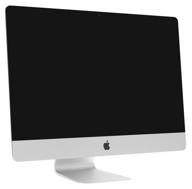
27" Apple iMac All-in-One (Retina 5K, Mid 2020) MXWT2RU/A, 5120x2880, Intel Core i5 3.1GHz, 8GB RAM, 256GB SSD, AMD Radeon Pro 5300, MacOS, Silver

13 Review

15.6" Laptop ASUS Vivobook Pro 15 M6500QC-HN118 1920x1080, AMD Ryzen 7 5800H 3.2GHz, RAM 16GB, DDR4, SSD 512GB, NVIDIA GeForce RTX 3050, no OS, 90NB0YN1-M006N0, blue

24 Review

HP Pavilion Gaming Desktop Computer, Ryzen 5 3500 Processor, NVIDIA GTX 1650 4 GB, 8 GB RAM, 512 GB SSD, Windows 10 Home (TG01-0030, Black)

11 Review

